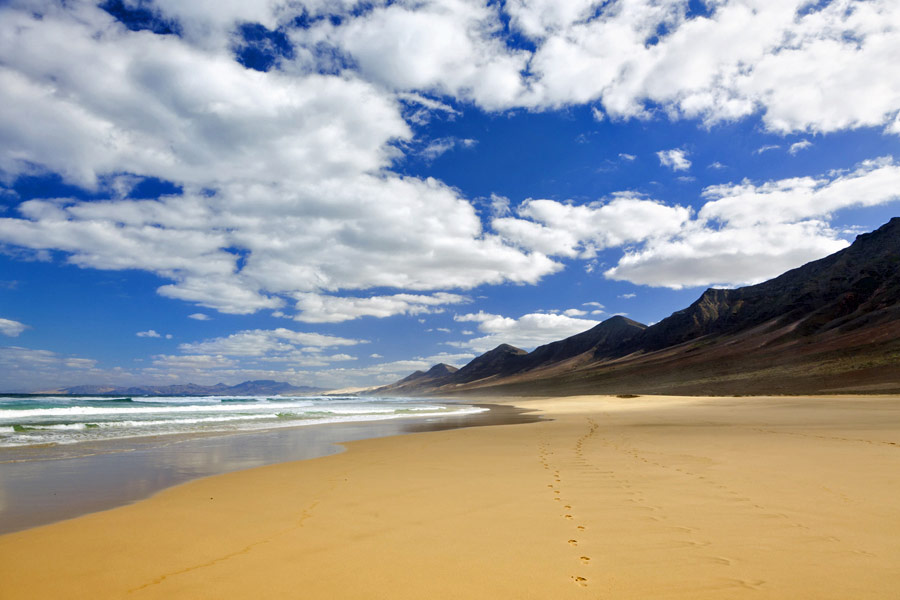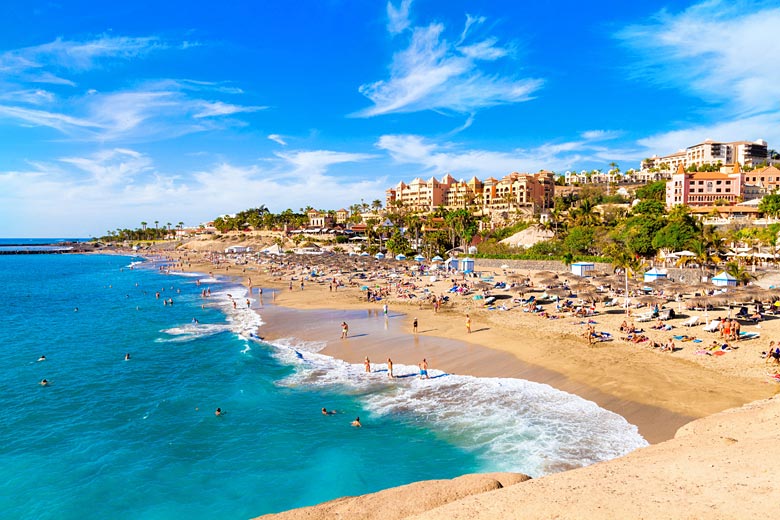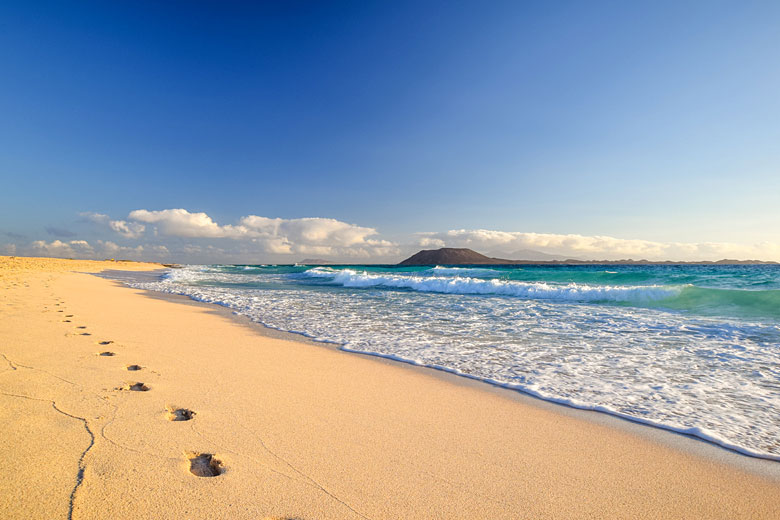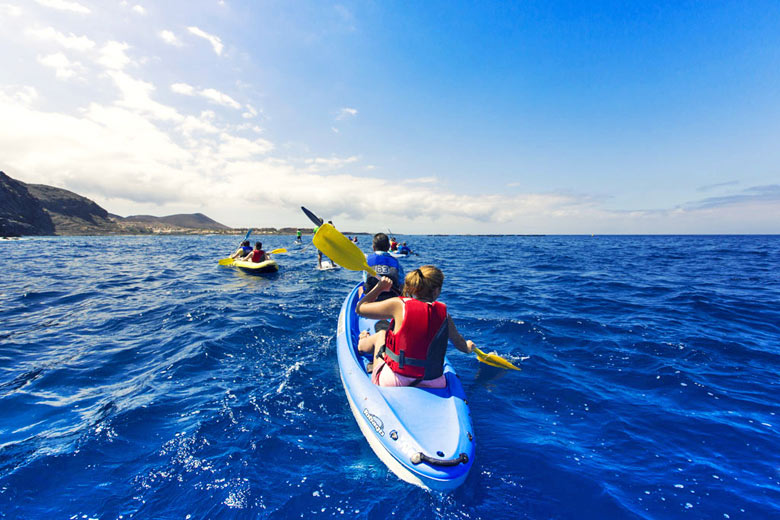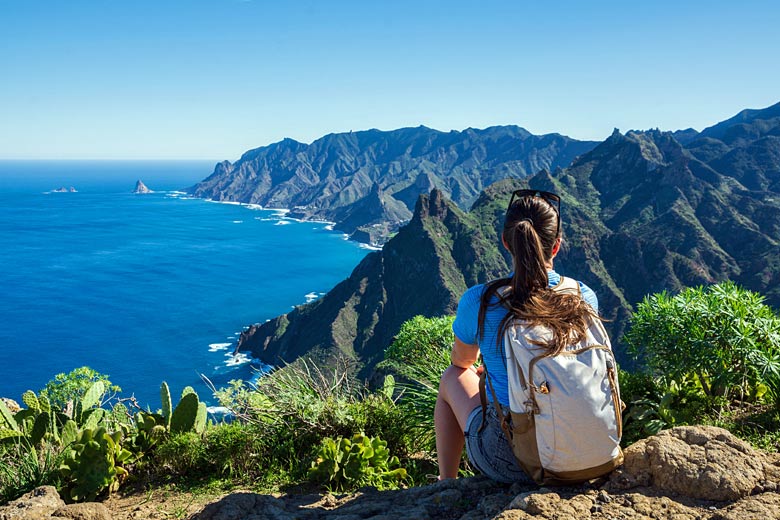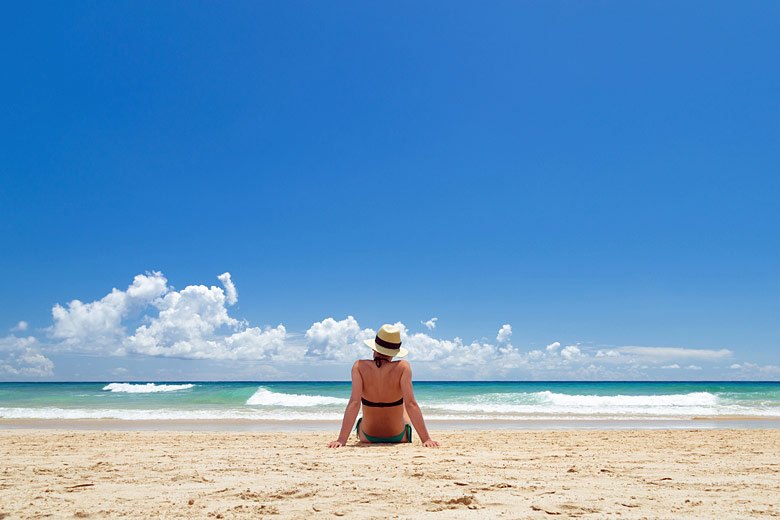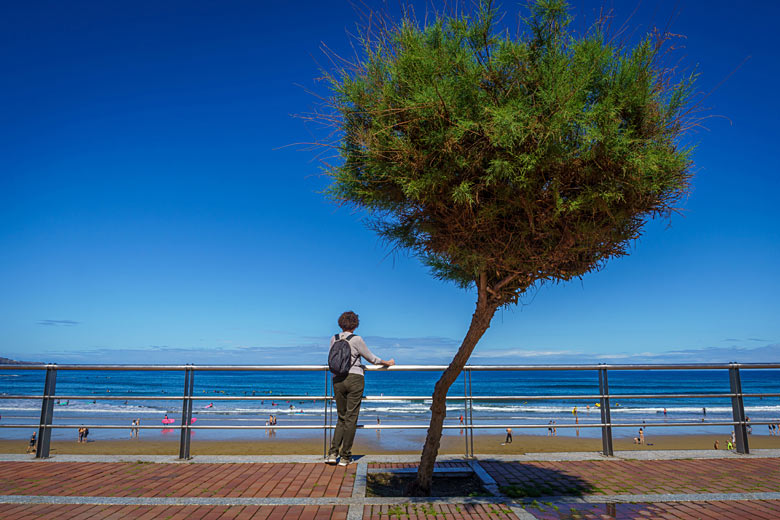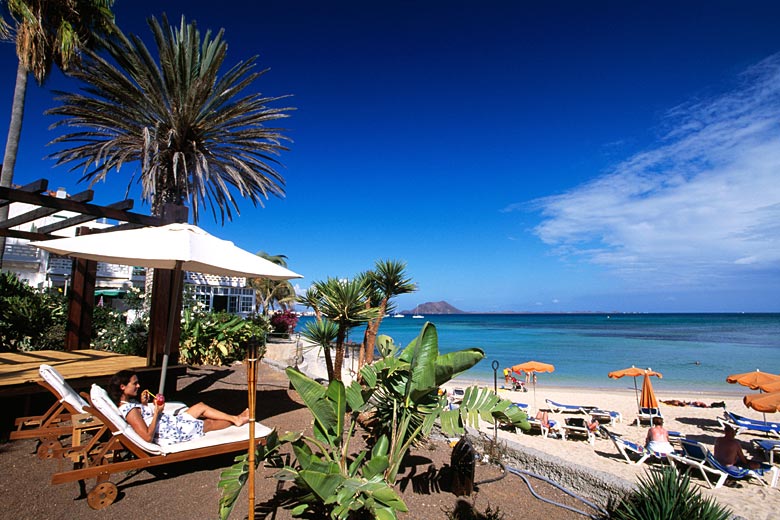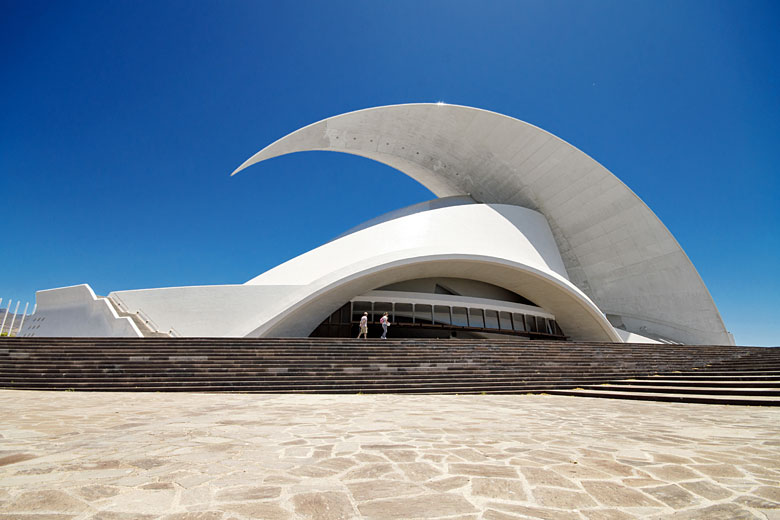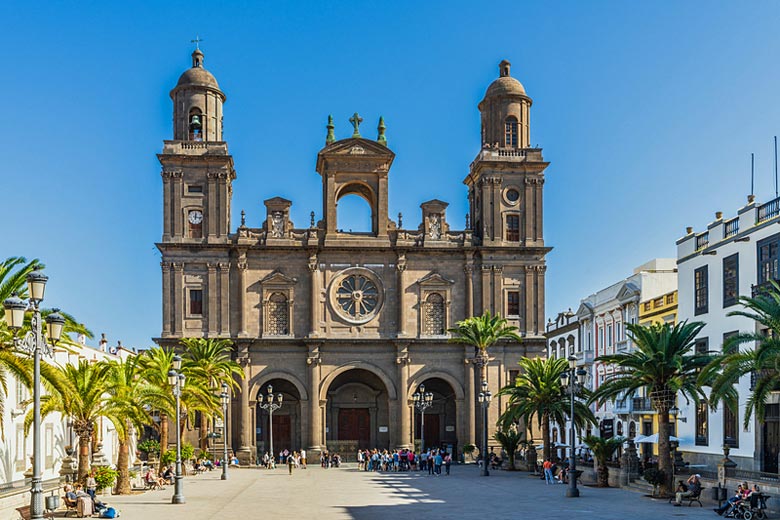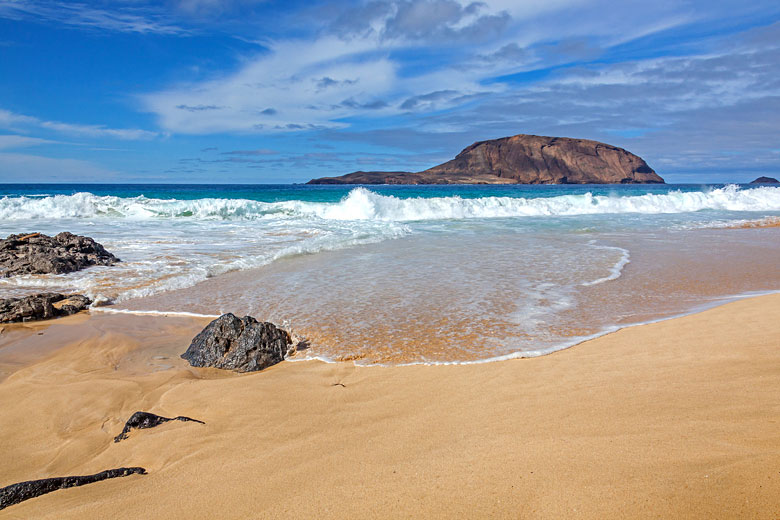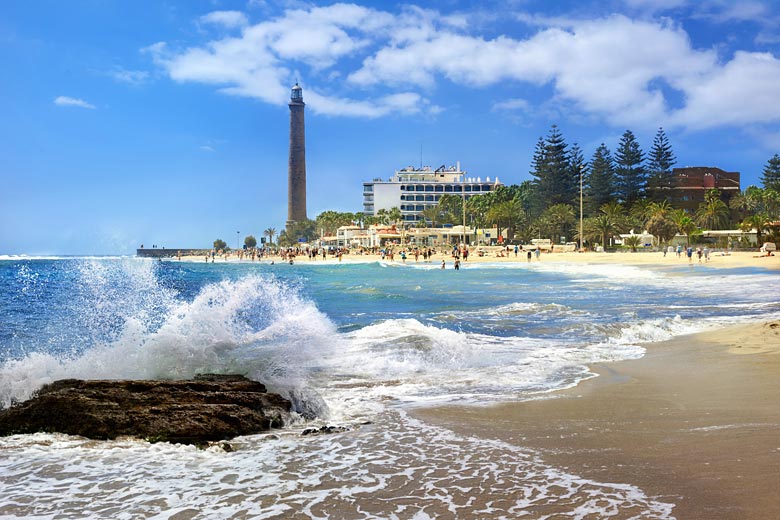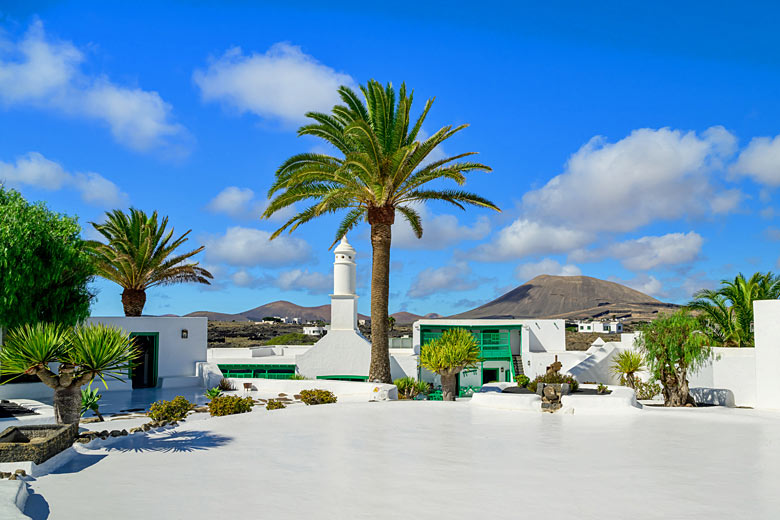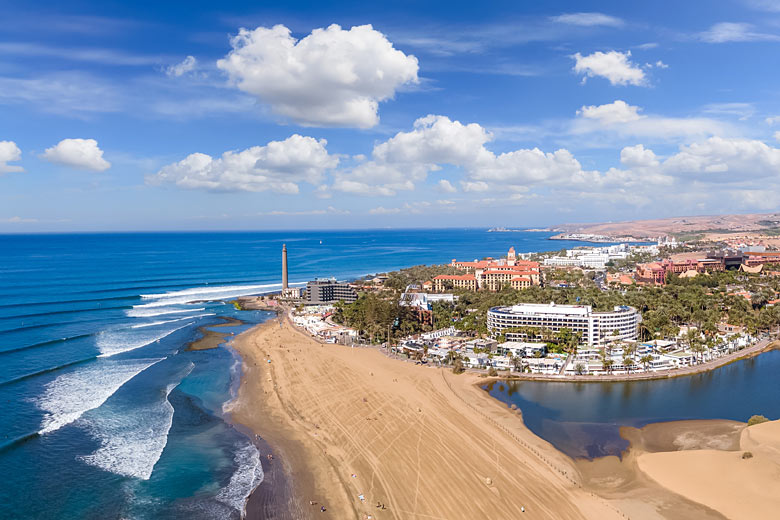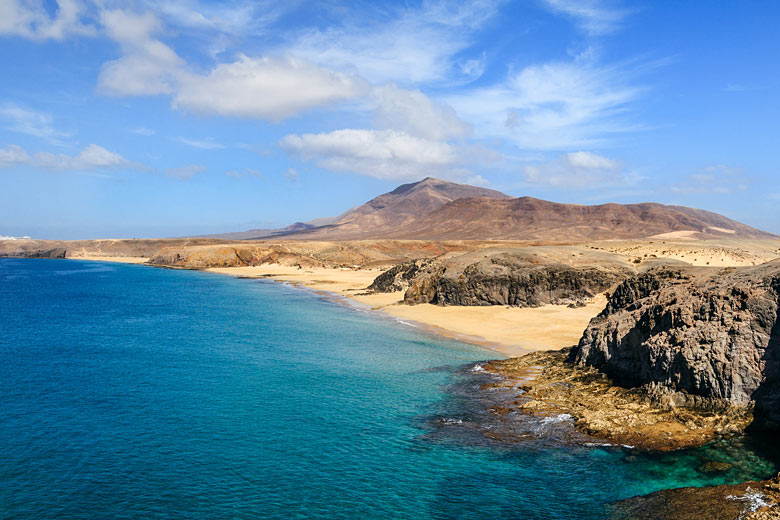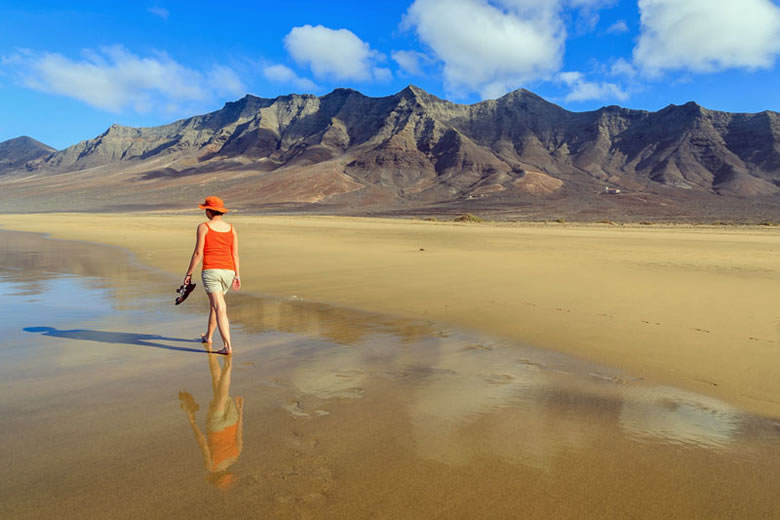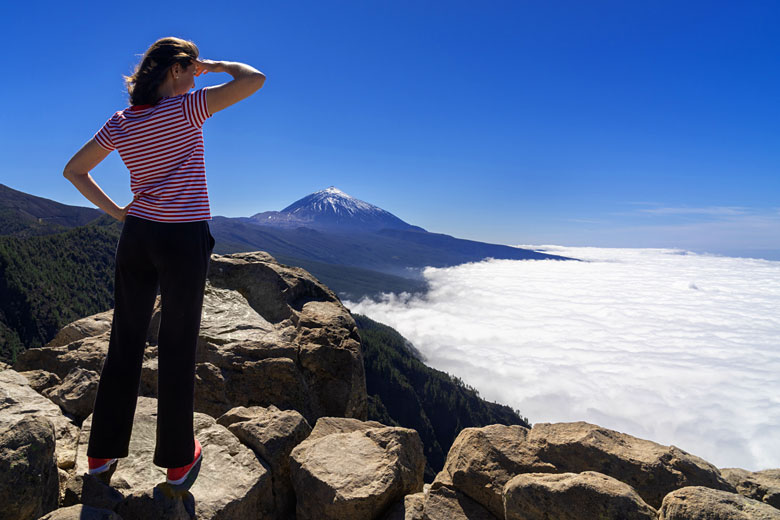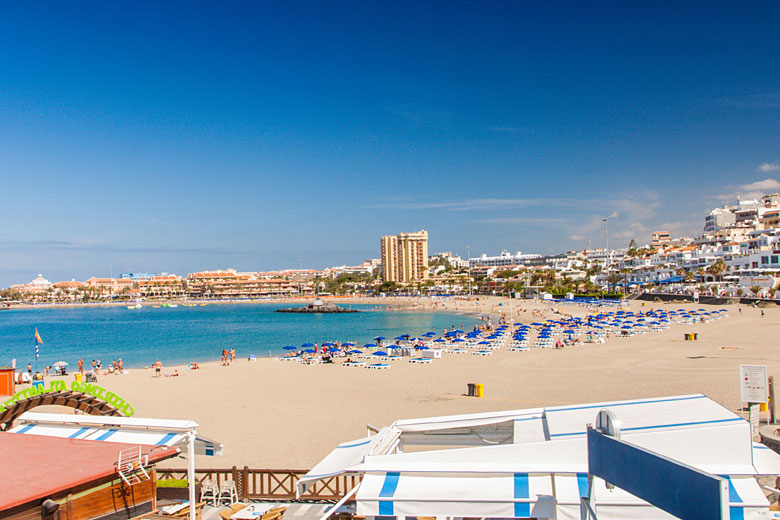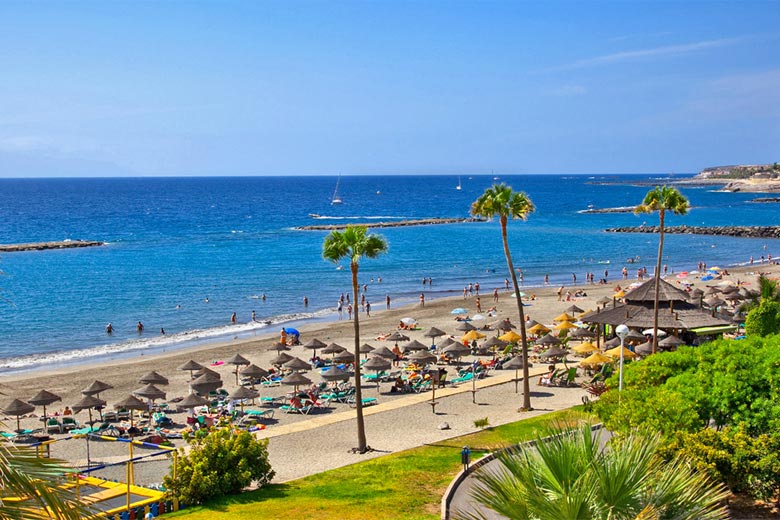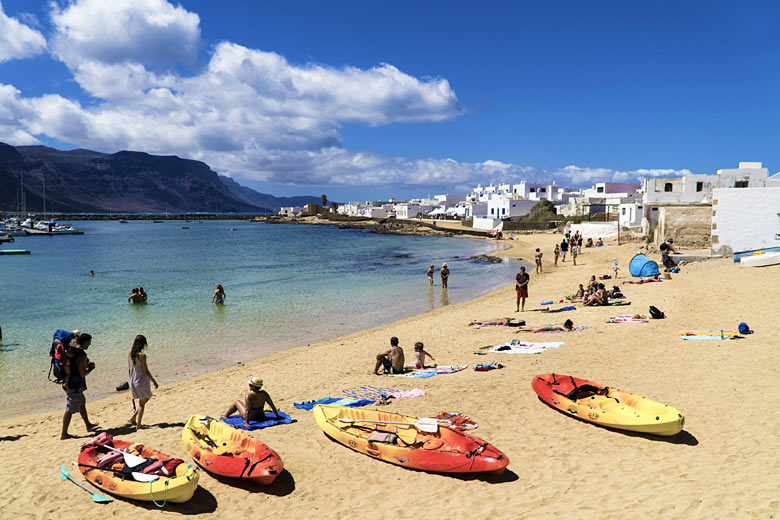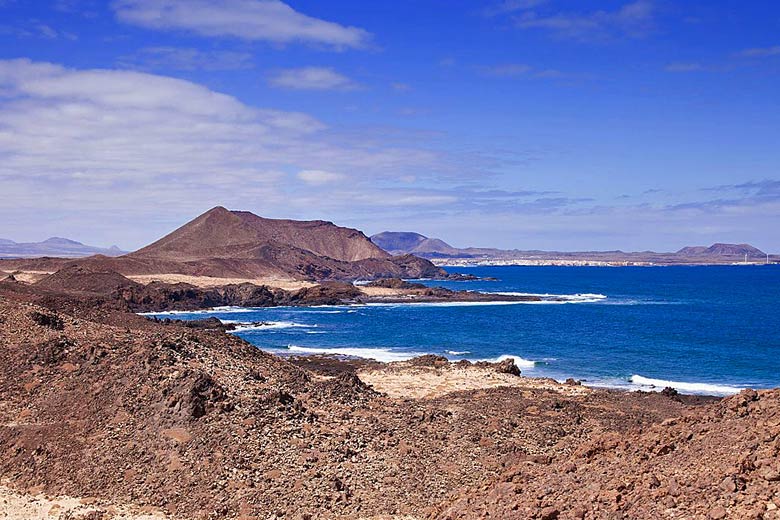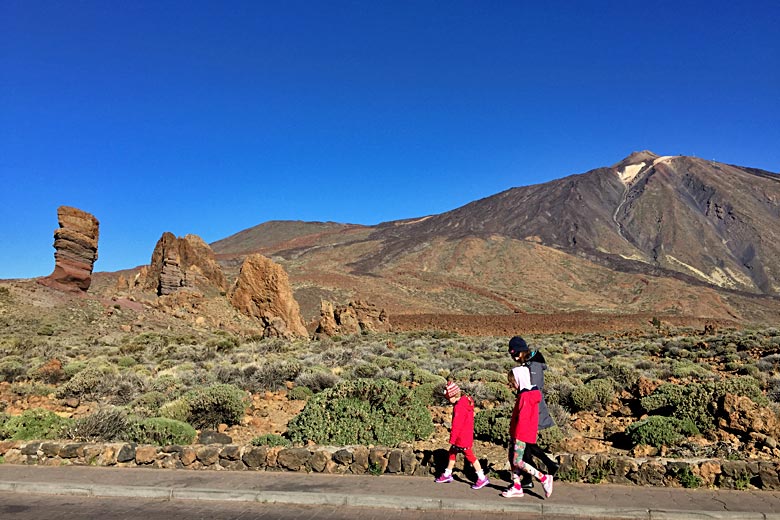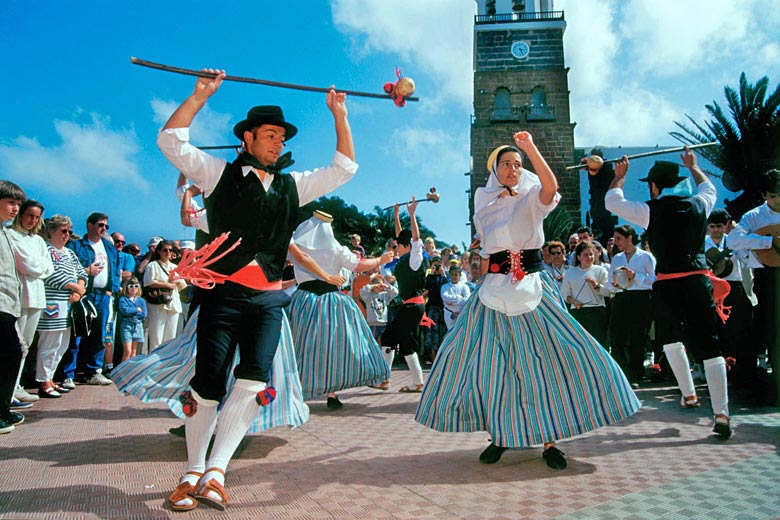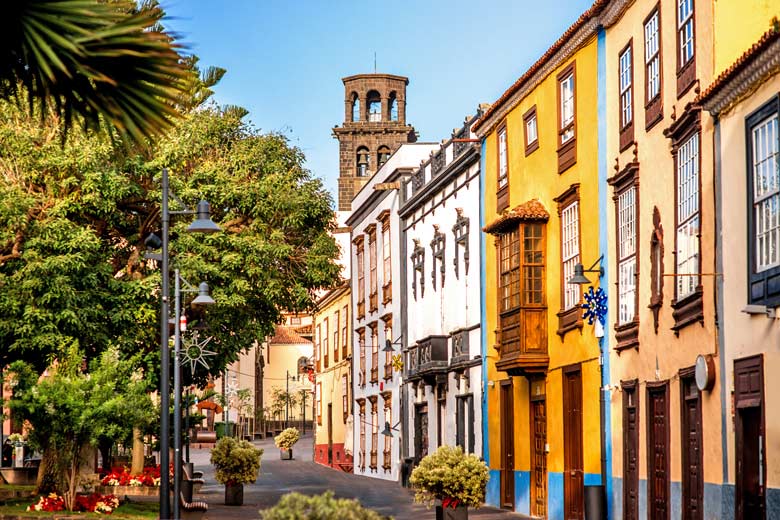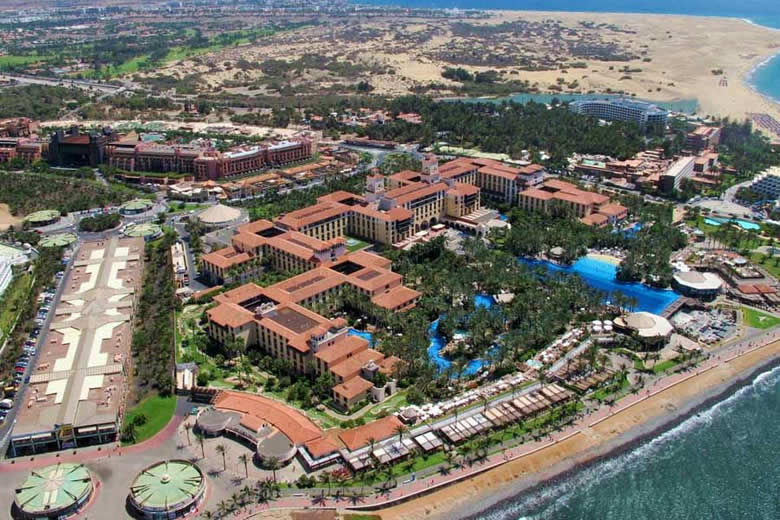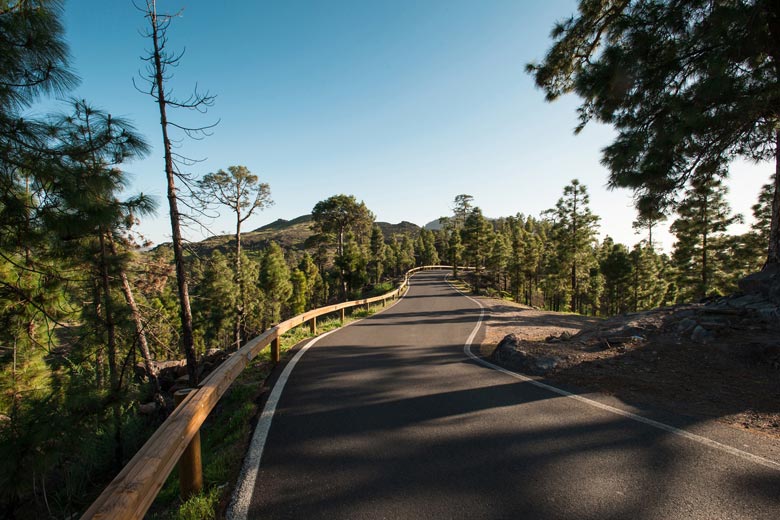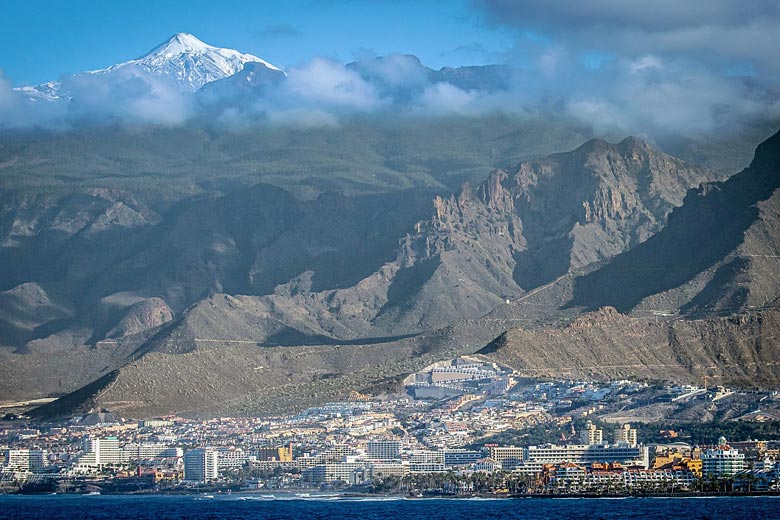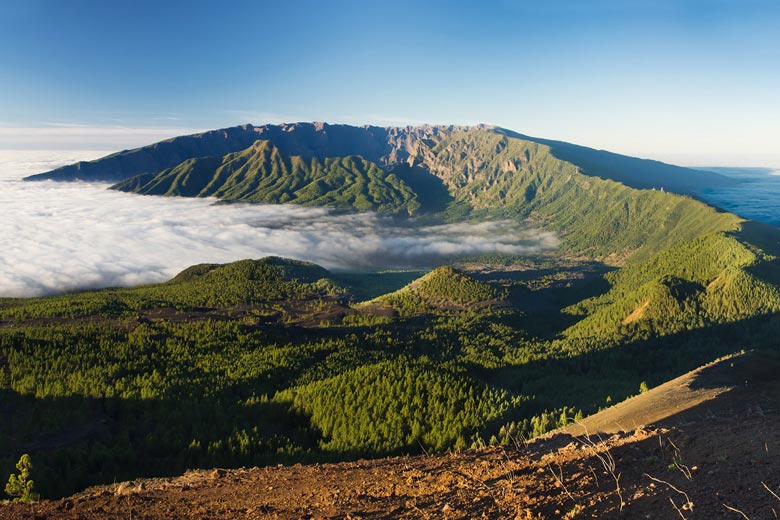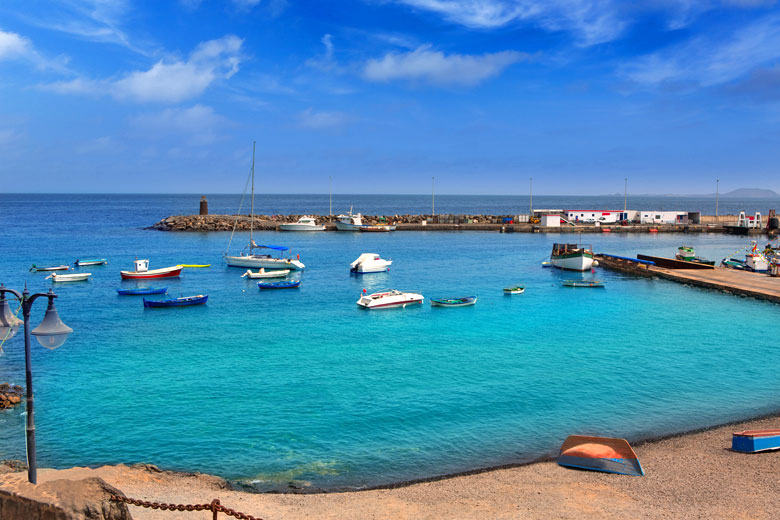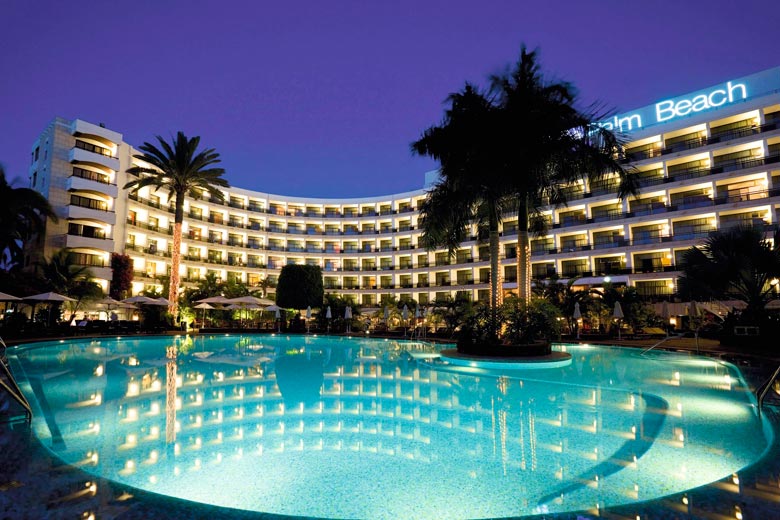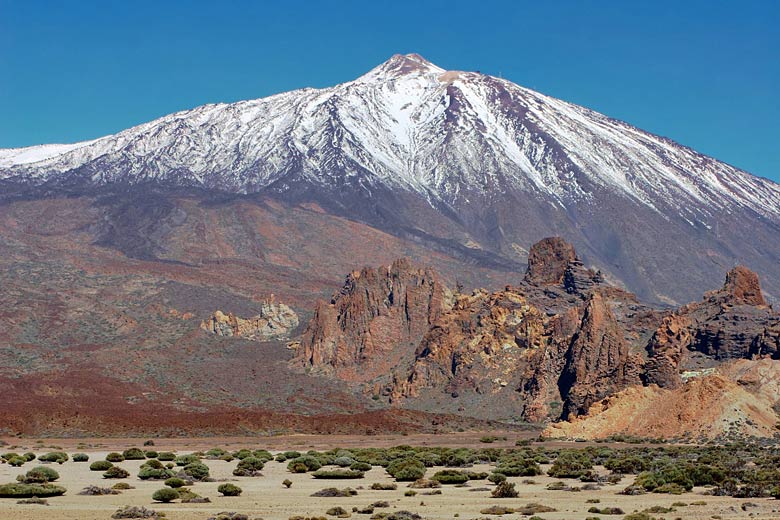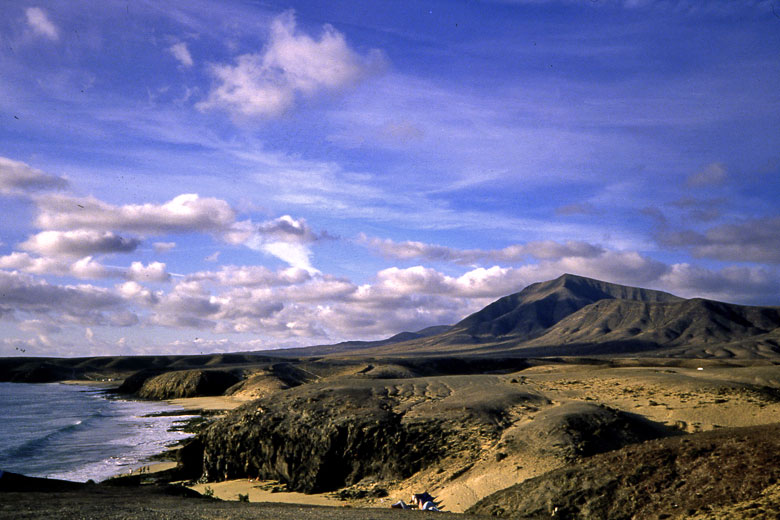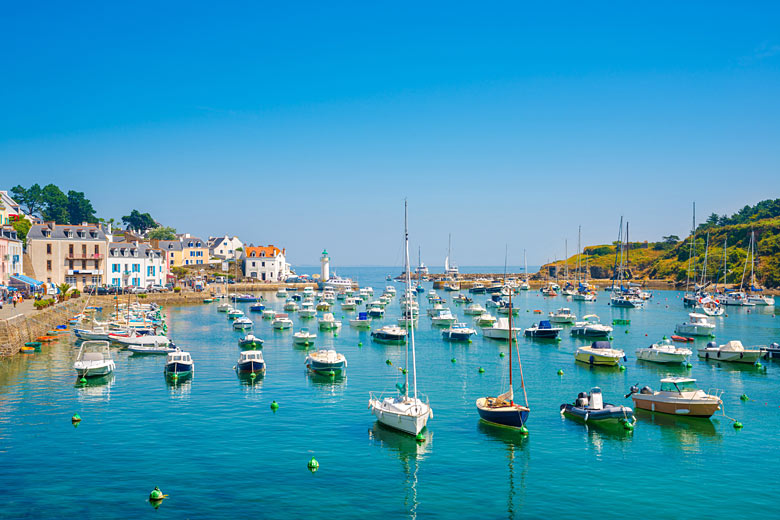- Book flights from 28 Euros with Iberia Express
- Discover breaks to Lyon, Madrid, Manchester & more
- Travel before 31st July 2025 (inclusive)
Best time to visit the Canary Islands
The volcanic archipelago of the Canary Islands, an autonomous community that's a part of Spain, lies in the Atlantic Ocean off the northwest coast of Africa. It is a much-loved holiday destination thanks to its year-round sunshine and reliable temperatures.
- Best time to visit
- Weather by month
- 5-day weather forecast
- Destinations
- Travel advice
- Deals & discounts
Canary Islands by month
Jan Feb Mar Apr May Jun Jul Aug Sep Oct Nov Dec
Recommended for the Canary Islands
Expires at 23:59 on Monday 21st Apr 2025
There are eight islands, the largest being Tenerife followed by Fuerteventura, Gran Canaria, Lanzarote, La Palma, La Gomera, El Hierro and La Graciosa.
Top Canary Islands destinations
Below are the temperatures expected today at popular countries, regions and places in the Canary Islands. Select a destination to compare today's forecast with average weather conditions.
- Puerto del Carmen
- Lanzarote
- Playa del Ingles
- Fuerteventura
- Gran Canaria
- La Gomera
- Playa Blanca
- Costa Adeje
- La Palma
- Playa de las Americas
- Tenerife
- Hierro
All Canary Islands regions
All Canary Islands destinations
- Adeje, Tenerife
- Agaete, Gran Canaria
- Aguimes, Gran Canaria
- Arguineguin, Gran Canaria
- Arona, Tenerife
- Arrecife, Lanzarote
- Arucas, Gran Canaria
- Bahia Feliz, Gran Canaria
- Caleta de Fuste, Fuerteventura
- Callao Salvaje, Tenerife
- Corralejo, Fuerteventura
- Costa Adeje, Tenerife
- Costa Antigua, Fuerteventura
- Costa Calma, Fuerteventura
- Costa del Silencio, Tenerife
- Costa Teguise, Lanzarote
- Cruz de Tejeda, Gran Canaria
- El Cotillo, Fuerteventura
- El Medano, Tenerife
- El Paso, La Palma
- El Sauzal, Tenerife
- Frontera, El Hierro
- Fuencaliente, La Palma
- Garachico, Tenerife
- Golf del Sur, Tenerife
- Guia de Isora, Tenerife
- La Asomada, Lanzarote
- La Caleta, Tenerife
- La Vagueta, Lanzarote
- Las Caletillas, Tenerife
- Las Canteras, Gran Canaria
- Las Palmas, Gran Canaria
- Las Playitas, Fuerteventura
- Los Cancajos, La Palma
- Los Cristianos, Tenerife
- Los Gigantes, Tenerife
- Los Llanos, La Palma
- Los Valles, Lanzarote
- Maspalomas, Gran Canaria
- Matagorda, Lanzarote
- Meloneras, Gran Canaria
- Morro Jable, Fuerteventura
- Mount Teide, Tenerife
- Nuevo Horizonte, Fuerteventura
- Orotava, Tenerife
- Pajara, Fuerteventura
- Patalavaca, Gran Canaria
- Playa Amadores, Gran Canaria
- Playa Blanca, Lanzarote
- Playa de Esquinzo, Fuerteventura
- Playa de Fanabe, Tenerife
- Playa de Jandia, Fuerteventura
- Playa de la Arena, Tenerife
- Playa de las Americas, Tenerife
- Playa de los Pocillos, Lanzarote
- Playa de Santiago, La Gomera
- Playa del Cura, Gran Canaria
- Playa del Ingles, Gran Canaria
- Playa Honda, Lanzarote
- Playa Mogan, Gran Canaria
- Playa Paraiso, Tenerife
- Playa Taurito, Gran Canaria
- Puerto Calero, Lanzarote
- Puerto de la Cruz, Tenerife
- Puerto de Santiago, Tenerife
- Puerto del Carmen, Lanzarote
- Puerto del Rosario, Fuerteventura
- Puerto Naos, La Palma
- Puerto Rico, Gran Canaria
- Salobre Golf, Gran Canaria
- San Agustin, Gran Canaria
- San Bartolome, Lanzarote
- San Bartolome de Tirajana, Gran Canaria
- San Isidro, Tenerife
- San Mateo, Gran Canaria
- San Miguel, Tenerife
- San Sebastian de la Gomera, La Gomera
- Santa Brigida, Gran Canaria
- Santa Cruz de la Palma, La Palma
- Santa Cruz de Tenerife, Tenerife
- Santa Ursula, Tenerife
- Tazacorte, La Palma
- Tias, Lanzarote
- Valle Gran Rey, La Gomera
- Valverde, El Hierro
- Vilaflor, Tenerife
- Yaiza, Lanzarote
When is the best time to visit Canary Islands?
Max Day Temperature (°C)
- Jan
 18
18 - Feb
 19
19 - Mar
 20
20 - Apr
 20
20 - May
 21
21 - Jun
 23
23 - Jul
 26
26 - Aug
 27
27 - Sep
 26
26 - Oct
 24
24 - Nov
 21
21 - Dec
 19
19
Which is the hottest month in the Canary Islands?
The hottest time of year in Santa Cruz de Tenerife, Canary Islands is normally August. Expect maximum daytime temperatures to reach 27°C with moderate heat and humidity.
Which month has the most rain in the Canary Islands?
In terms of rainfall, December is usually the wettest month in Santa Cruz de Tenerife, Canary Islands with 74mm on average. There are normally 7 days in December with some rain.
When is it sunniest in the Canary Islands?
The sunniest time of year in Santa Cruz de Tenerife, Canary Islands is normally July with bright sunshine on average for 74% of daylight hours; that's 10 hours of sunshine per day.
When is the sea warmest in the Canary Islands?
The sea is usually at its warmest in Santa Cruz de Tenerife, Canary Islands in September when the water temperature reaches 24°C.
Best time to visit
The weather guide for Canary Islands (Santa Cruz de Tenerife) shows long term weather averages processed from data supplied by CRU (University of East Anglia) & today's weather forecast provided by meteoblue. Find out more about our data sources.
Metric (°C / mm) | Imperial (°F / inches)
Weather in the Canary Islands
The weather in the Canary Islands plays a starring role in its appeal as a major holiday destination. With truly great conditions all year round, it's no wonder that they continue to be among the most popular places to go for sunshine from January to December; it really does have one of the best climates in the world.
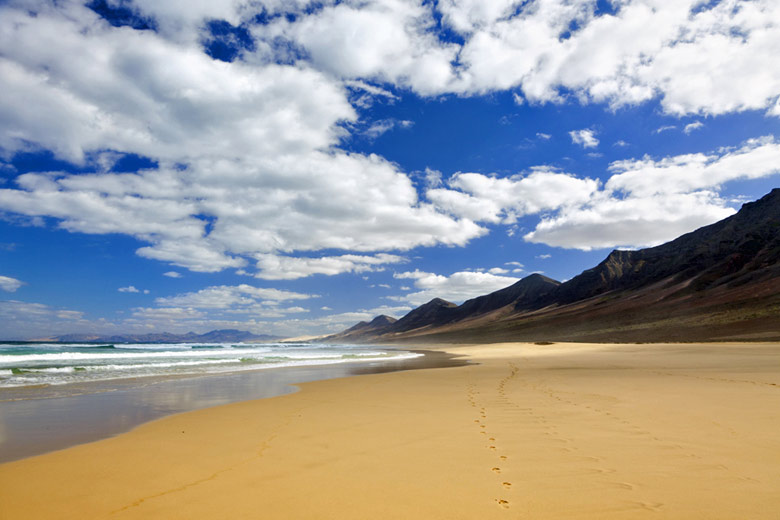
This Spanish archipelago has a Mediterranean climate all of its own. The islands, of which there are seven main destinations, are rocky and volcanic with snow on their highest peaks and black and white sandy beaches at sea level.
While each island's weather is marginally different typically, the Canaries enjoy warm summers and pleasant winters. We have broken the seasons in two, showing just summer and winter. There simply isn't enough differentiation to include spring and autumn, as the weather changes only gradually throughout the year.
However, there are some local differences depending on altitude and which side of the mountains you are on. For example, on mountainous islands such as Tenerife and Gran Canaria, the higher you go, the colder it gets.

Typically, north-facing spots in the north of each of the islands are cloudier with more rain than south-facing places in the south of islands.
Whatever type of trip you're planning, be it a family summer holiday, winter sun escape or group getaway, you can find out everything you need to know about the weather in the Canary Islands right here.
Read on to find out more about the islands, take a look at today's temperature, the five-day outlook, and what the weather is usually like at this time of year with our collection of climate averages.
- Canary Islands in summer - May to October
- Canary Islands in winter - November to April
- Individual Canary Islands
Canary Islands in summer - May to October
Summer in the Canary Islands sees virtually no rainfall, up to 10 hours of sunshine each day and temperatures that easily hit the high twenties, staying warm into the evenings.
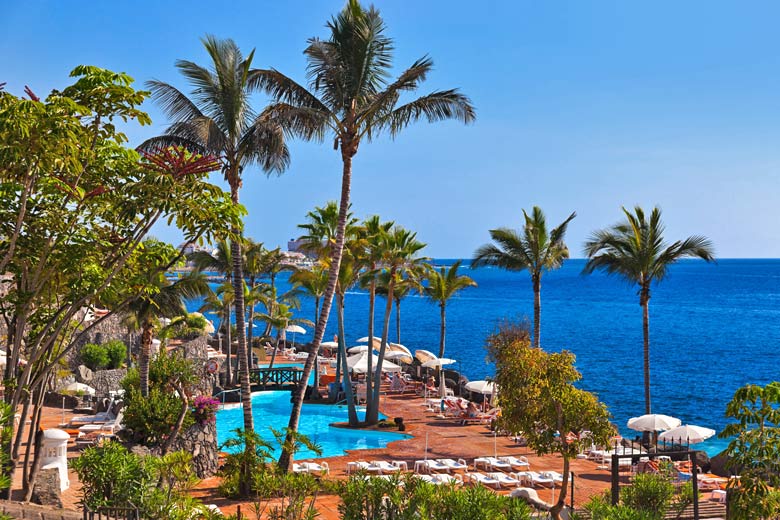
The hottest days occur when hot, dry, dust-laden air is drawn out of the Sahara desert and reaches the islands brought via calima winds.
While it often rolls through quite quickly, it can, on occasion, linger for a few days or even weeks, creating haze and visibility problems but don't let this put you off.
The cold Atlantic current, which surrounds the Canaries, prevents temperatures in summer from climbing uncomfortably high. So unlike some other destinations in the eastern Med and North Africa, the Canary Islands don't succumb to any intense heat and humidity, with only moderate levels at the height of summer from July to September, which guarantees a sweat-free holiday.
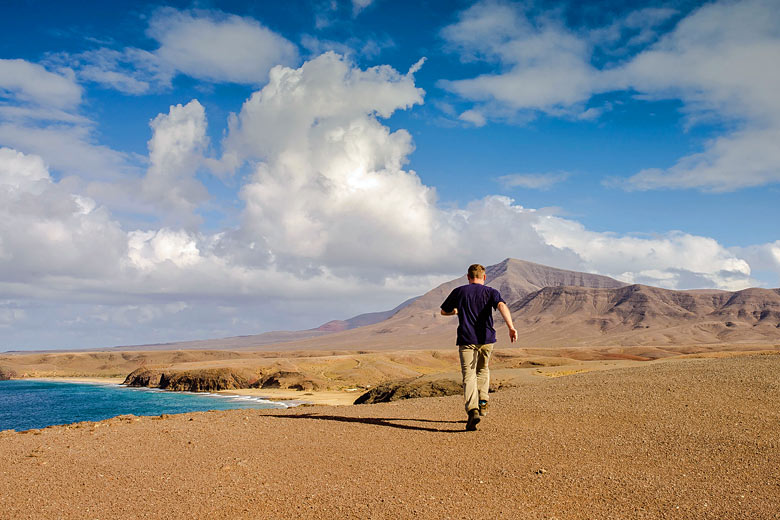
The cold current does, however, mean that sea temperatures never rise to the same highs you would find in parts of the Mediterranean, rarely surpassing 23°C at their peak in August compared with around 27°C at the same time in Cyprus, for example.
Which Canary Islands should you visit? If you're wondering where to visit first, don't miss our guide to choosing the right Canary Island for your holiday.
Canary Islands in winter - November to April
The Canaries are just as popular in winter when people flock to the islands between November and April for the mild, sunny conditions.
There's more rain about during this time, especially on the northern sides of the islands and perhaps a touch of fog, although not enough to ruin any holiday.

Daytimes enjoy up to six hours of sunshine from November to April which, compared with one to two hours in the UK, is a welcome change. Temperatures hover between 21°C and 18°C, although evenings are cooler dropping as low as 12°C by February.
But one big difference that is often overlooked is the number of daylight hours. In December, Tenerife enjoys two more hours of daylight every day when compared with Manchester in the UK.

The weather in the Canary Islands in winter is thoroughly enjoyable but not necessarily right for those after some serious sunbathing, especially as the sea temperature is less than appealing at around 19°C from January to April.
Overall, the Canary Islands in winter are ideal for those keen to experience and explore; go for the fine food, hiking, walks and scenery of these diverse Atlantic islands.
Individual Canary Islands
Take your pick from huge holiday favourites such as Tenerife and Gran Canaria to the lesser-known islands of La Gomera and El Hierro.
- Tenerife - with the snowcapped Mount Teide at the centre of the island separating the drier, sunnier south from the more populated and greener farming areas of the north, Tenerife offers something for everyone from hikes and trails to lively towns, beaches, water sports and pretty villages
- Fuerteventura - this is one of the driest islands with arguably the best selection of golden beaches, and countless opportunities for watersports such as sailing and windsurfing thanks to the trademark winds, much loved by families, adventure seekers and couples
- Lanzarote - another dry island, Lanzarote is home to stunning volcanic cones and black lava landscape as well as plenty of places to rest, party, visit and explore for all types of holidaymakers
- Gran Canaria - from the dunes of Maspalomas in the drier south to the more green and fertile north, this island has some of the most beautiful mountain scenery of them all as well as great beaches, nightlife and facilities
- La Palma - also known as the Isla Bonita or beautiful island, La Palma is the greenest of the Canary Islands with more rain than the others as it's located further out into the Atlantic
- La Gomera - no more than 20 miles from Tenerife, La Gomera is a mountainous island popular with daytrippers, with terraces, walks and a handful of black sand beaches
- El Hierro - step back in time on the rocky, rugged island of El Hierro - forget high rise developments, here it's all about local guesthouses, hiking and exploring.
Ready to book your holiday to the Canaries? Search flights and holidays to the Canary Islands in our travel deals and discounts section.
Canary Islands travel features
Do you want to learn more about the Canary Islands? Read our latest features covering travel tips and insider destination guides on where to go and what to do in the Canary Islands.
Be inspired
Get your weekly fix of holiday inspiration from some of the world's best travel writers plus save on your next trip with the latest exclusive offers
We promise not to share your details
Related posts
Popular travel offers
Explore holidays in the sun for less
- Beach holidays
- Family holidays
- City breaks
- Summer holidays
- Winter sun holidays
- Holiday offers
- Top travel brands
- Airlines & flights
- Discount hotels
- Airport parking deals
- TUI
- Jet2holidays
- easyJet holidays
- Love Holidays
- January sales
Airport parking
- Manchester Airport
- Stansted Airport
- Bristol Airport
- Luton Airport
- Birmingham Airport
- Edinburgh Airport
- Gatwick Airport
- Glasgow Airport
- Newcastle Airport
Airport lounges
- Manchester Airport
- Birmingham Airport
- Bristol Airport
- Edinburgh Airport
- Glasgow Airport
- Heathrow Airport
- Newcastle Airport
- Stansted Airport
- Gatwick Airport























